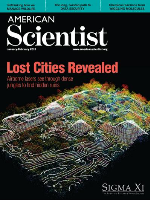
AMERICAN SCIENTIST
Scope & Guideline
Championing Quality Research for a Better Tomorrow.
Introduction
Aims and Scopes
- Interdisciplinary Scientific Exploration:
The journal covers diverse fields including biology, chemistry, physics, and environmental science, emphasizing the interconnectedness of scientific disciplines. - Public Engagement and Science Communication:
A strong focus on how scientific findings can be communicated effectively to the public, aiming to enhance public understanding of science. - Emerging Technologies and Innovations:
Research on cutting-edge technologies, including biotechnology, artificial intelligence, and medical advancements, highlighting their implications for society. - Environmental and Ecological Studies:
A consistent emphasis on environmental science, climate change, and ecological restoration, reflecting growing global concerns about sustainability. - Historical and Ethical Perspectives in Science:
Exploration of the historical context and ethical considerations surrounding scientific practices and advancements.
Trending and Emerging
- Health and Well-Being:
Recent papers show a significant increase in topics related to health, including mental health, the effects of racism on health, and the impact of COVID-19, indicating a growing concern for public health issues. - Climate Change and Environmental Resilience:
There is a marked trend towards discussing climate-related challenges and resilience strategies, emphasizing the urgency of addressing environmental concerns. - Data Science and Big Data Applications:
The rise of big data analytics and its applications in various fields, such as genomics and environmental science, reflects a growing interest in leveraging data for scientific advancements. - Ethics in Science and Technology:
An emerging focus on the ethical implications of scientific research and technological advancements, including discussions on equity, justice, and public engagement in science. - Science Communication and Civic Engagement:
A trend towards promoting civic science and public engagement initiatives, highlighting the importance of involving the community in scientific discourse and decision-making.
Declining or Waning
- Traditional Laboratory-Based Research:
There appears to be a decline in articles centered around traditional laboratory methodologies, as the journal shifts towards more interdisciplinary and applied research themes. - Purely Theoretical Studies:
As the journal embraces real-world applications and implications of science, purely theoretical explorations in fields such as mathematics and physics have seen a reduction. - Historical Scientific Figures:
While historical perspectives are still relevant, there has been less emphasis on detailed biographies of historical scientists, signaling a shift towards contemporary issues and figures.
Similar Journals

JOURNAL OF SCIENTIFIC & INDUSTRIAL RESEARCH
Fostering Collaboration in Scientific and Industrial EndeavorsJOURNAL OF SCIENTIFIC & INDUSTRIAL RESEARCH, published by the NATL INST SCIENCE COMMUNICATION-NISCAIR in India, serves as a prominent multidisciplinary platform for disseminating impactful research since its establishment in 1969. With an Open Access model adopted in 1999, the journal ensures wide visibility and accessibility of innovative findings across various scientific disciplines. The journal, indexed with an ISSN of 0022-4456 and an E-ISSN of 0975-1084, offers researchers, professionals, and students an opportunity to engage with a diverse body of work, ranking in Q3 of the Scopus categories for 2023. Its scope spans an extensive timeline, accommodating submissions across a wide array of industrial and scientific advancements, promoting collaboration and knowledge sharing. By adhering to rigorous academic standards, the JOURNAL OF SCIENTIFIC & INDUSTRIAL RESEARCH plays a critical role in shaping the future of science and industry, drawing contributors and readers eager to contribute to and understand the latest trends and discoveries in this dynamic field.

Research
Empowering research through open access innovation.Research (ISSN: 2096-5168, E-ISSN: 2639-5274) is a premier open-access journal published by the American Association for the Advancement of Science, based in the United States. Since its transition to open access in 2018, the journal has established itself as a vital resource for the dissemination of high-quality, interdisciplinary research spanning various fields. With an impressive Q1 ranking in the multidisciplinary category for 2023 and a remarkable Scopus rank placing it in the top 6% of its field, Research is dedicated to advancing knowledge and fostering innovative research practices. The journal's comprehensive scope ensures that it caters to a diverse audience of researchers, professionals, and students, making it an essential platform for those looking to stay at the forefront of scientific discovery. The journal is actively accepting submissions for its converged years from 2018 to 2024, encouraging contributions that drive engagement and collaboration across disciplines.

Cultura Cientifica
Unlocking the Potential of Scientific Collaboration.Cultura Cientifica is a distinguished open-access journal published by FUNDACION UNIV JUAN CASTELLANOS, dedicated to fostering scientific knowledge and community engagement within the field of science and technology. With an ISSN of 1657-463X and an E-ISSN of 2389-9638, the journal has been providing unrestricted access to research since its inception in 2001, effectively contributing to the dissemination of valuable scientific insights. Based in Tunja, Boyacá, Colombia, "Cultura Cientifica" aims to serve as a platform for researchers, professionals, and students by featuring high-quality research articles, reviews, and case studies that reflect the latest advancements and debates in the scientific community. Although the journal does not currently have an H-index or Scopus ranking, its commitment to open access and knowledge sharing makes it an essential resource for those seeking to expand their understanding and impact within the scientific discourse.

Foundations of Science
Illuminating the Philosophical Foundations of DiscoveryFoundations of Science is a renowned academic journal published by SPRINGER, dedicated to the interdisciplinary exploration of both the historical and philosophical dimensions of science. Established in 1995 and based in the Netherlands, this journal has carved out a significant niche within the History and Philosophy of Science and Multidisciplinary fields, holding an impressive Q2 ranking in both categories as of 2023. The journal's rigorous peer-review process ensures the dissemination of high-quality research, supported by its Scopus rankings, which place it in the top 15% of its peer group in History and Philosophy of Science and the top 28% in Multidisciplinary studies. Although not an open-access journal, Foundations of Science remains accessible through various academic channels, making its vital contributions to the discourse surrounding scientific foundations available to a broad audience. By fostering dialogue across disciplines, it plays a crucial role in advancing the understanding of science's philosophical underpinnings and its historical development, making it an essential resource for researchers, professionals, and students alike.
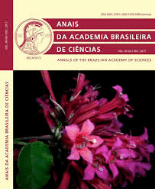
ANAIS DA ACADEMIA BRASILEIRA DE CIENCIAS
Advancing Scientific Frontiers, One Article at a Time.ANAIS DA ACADEMIA BRASILEIRA DE CIENCIAS is a prestigious multidisciplinary journal published by the Academia Brasileira de Ciencias, dedicated to advancing knowledge across a variety of scientific fields. With an ISSN of 0001-3765 and an E-ISSN of 1678-2690, this journal has established itself as a crucial platform for researchers and professionals, emphasizing open access to facilitate the dissemination of original research since 2000. Covering significant scholarly contributions from its converged years spanning 1945 to present, ANAIS has earned its place in the Q2 quartile category and ranks #51 among 171 in Scopus' multidisciplinary sector, showcasing its commitment to high-quality research and its robust impact within the academic community. Nestled in the cultural hub of Rio de Janeiro, Brazil, the journal invites submissions from around the globe, providing an essential resource for students, scholars, and practitioners eager to stay at the forefront of scientific inquiry.
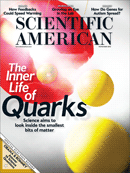
SCIENTIFIC AMERICAN
Innovating Knowledge Sharing Across DisciplinesSCIENTIFIC AMERICAN, published by Springer, stands as a prestigious multidisciplinary journal dedicated to disseminating cutting-edge scientific knowledge across a range of fields. Established in 1947, this journal has been integral in bridging the gap between scientific research and public understanding, making complex ideas accessible to a broader audience. With an ISSN of 0036-8733 and E-ISSN of 1946-7087, it maintains a strong standing within the academic community, currently ranked in the Q3 category for its multidisciplinarity, and is positioned at #93 out of 120 in its Scopus ranking, reflecting its valuable contribution to scientific discourse. While the journal is not open access, its long history and commitment to knowledge sharing ensure it remains a vital resource for researchers, professionals, and students alike, fostering a deeper appreciation of science in society.
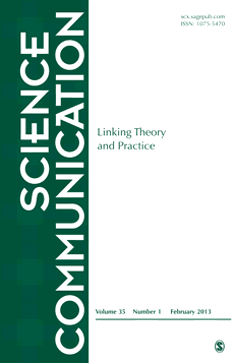
SCIENCE COMMUNICATION
Fostering Informed Discourse in Science CommunicationSCIENCE COMMUNICATION is a premier journal that has established itself as a vital platform for the exploration of the intersection between science, society, and communication practices. Published by SAGE Publications Inc, this journal boasts a commendable impact within the field, evidenced by its 2023 ranking as Q1 in Sociology and Political Science, placing it in the top percentile of its category. With an impressive Scopus rank of 14 out of 1466 in the social sciences domain, it serves as an essential resource for researchers, professionals, and students dedicated to understanding how scientific information is communicated and perceived across various platforms and audiences. Spanning a rich publication history from 1979 to 2024, SCIENCE COMMUNICATION publishes original research, case studies, and reviews that contribute to the development of effective communication strategies in science. Although the journal does not currently offer open access options, its content remains pivotal for fostering informed discourse within academia and beyond. Engaging with this journal is invaluable for anyone interested in enhancing science literacy and engagement in contemporary issues.
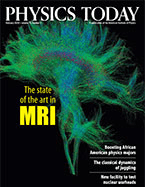
PHYSICS TODAY
Charting the Course of Modern Physics and AstronomyPHYSICS TODAY is a prestigious journal published by the American Institute of Physics, serving as a pivotal platform for the dissemination of innovative research and developments in the field of physics and astronomy. With an ISSN of 0031-9228 and an E-ISSN of 1945-0699, this journal has been in circulation since 1948 and is set to continue until 2024. Recognized for its substantial contributions to the scientific community, PHYSICS TODAY holds a significant position within the Q2 quartile of the Physics and Astronomy category as of 2023. Although it does not offer open access, its articles remain crucial resources for researchers, professionals, and students seeking to stay abreast of the latest advancements across a broad range of topics in general physics and astronomy. With a current Scopus ranking of #150 out of 243 and a percentile standing at 38, the journal bolsters its reputation as a reliable source for high-quality scientific discourse. In an era of rapid scientific advancement, PHYSICS TODAY remains dedicated to fostering a deeper understanding of the physical universe, making it an essential read for those invested in the future of physics.
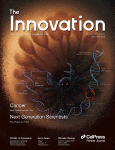
Innovation
Empowering Ideas for a Transformative FutureInnovation is an esteemed open-access journal published by CELL PRESS that has emerged as a leading platform for multidisciplinary research since its inception in 2020. With an impressive Scopus rank of #3 out of 171 in the multidisciplinary category and a notable impact factor placing it in the 98th percentile, the journal has quickly established itself as a crucial resource for researchers and professionals seeking to disseminate groundbreaking ideas and developments across various fields. Located in the United States, at 50 Hampshire St, Floor 5, Cambridge, MA, Innovation aims to foster collaboration and innovation by providing unrestricted access to advanced research. Its commitment to excellence is reflected in its categorization as Q1 in 2023, indicating its high citation and influence within the academic community. The journal invites submissions that push the boundaries of knowledge and encourages scholarly discourse, making it an indispensable resource for students, researchers, and practitioners committed to making impactful contributions to their respective fields.

JCOM-Journal of Science Communication
Bridging the Gap: Where Science Meets SocietyJCOM - Journal of Science Communication is a premier, peer-reviewed journal dedicated to enhancing the dialogue between science and society. Established in 2002 by the Scuola Internazionale Superiore di Studi Avanzati in Italy, it has become an essential platform for research in the field of science communication, reflecting the growing importance of effective communication in the advancement of scientific knowledge. The journal boasts an impressive Open Access model, encouraging widespread dissemination of critical research findings. With a notable impact in the Communication category, ranking in the Q2 quartile, and achieving a remarkable 77th percentile in Scopus ranks, JCOM positions itself as a crucial resource for scholars, professionals, and students alike. With a broad scope covering interdisciplinary aspects of science communication, the journal aims to foster innovative research and discussions that bridge the gap between scientific communities and the public. Located in Trieste, Italy, JCOM invites contributions that elevate the standards and practices of communicating science in an increasingly complex world.